
Data-driven HR
Struggling to turn HR data into stories that impress leadership? Our content hub has the answers. 📈
Explore our content hubThe Revealing Truth About People Analytics
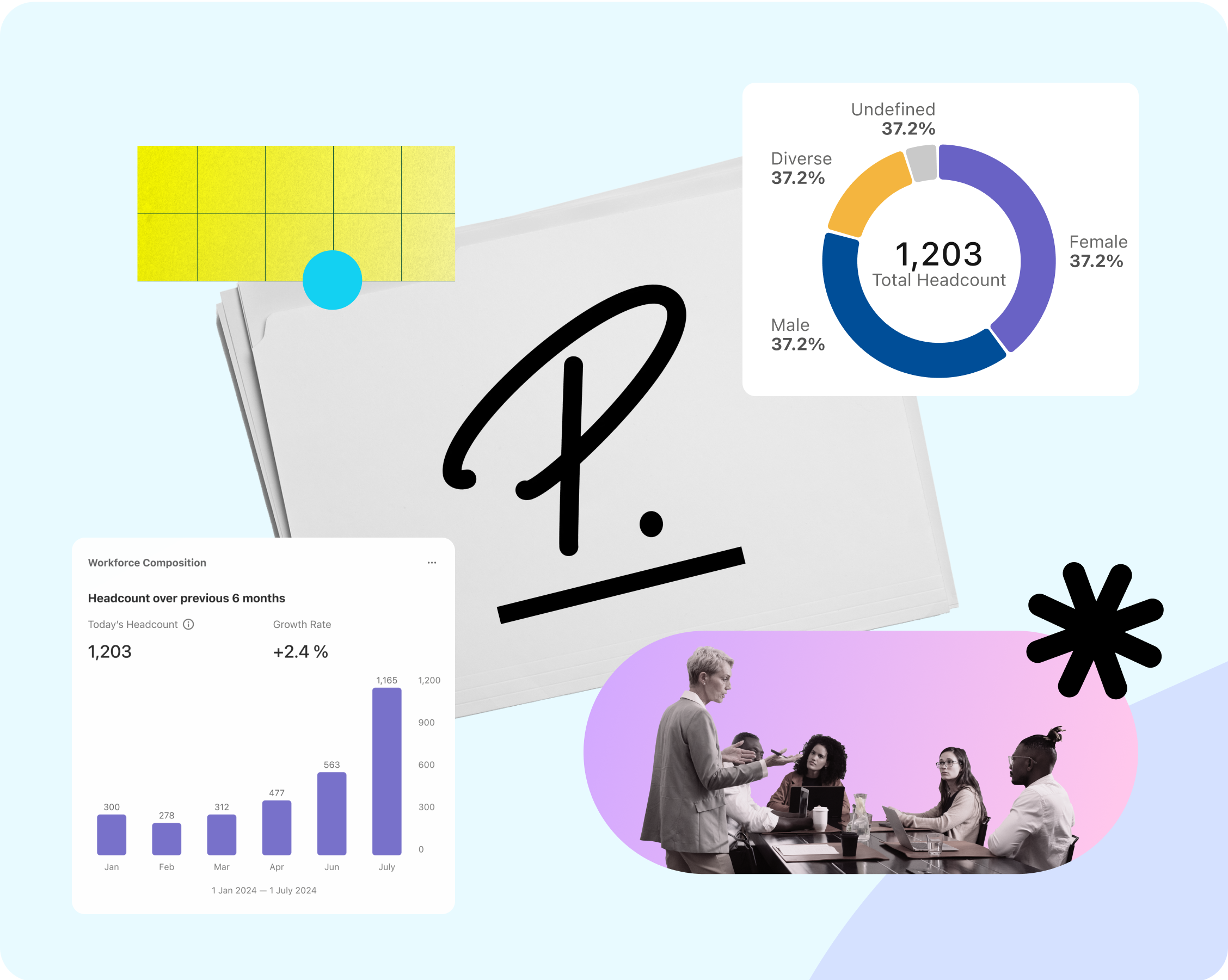
It’s simple: People analytics turns talent into trustworthy insight. Moreover, it’s way beyond simply knowing job titles, genders, ethnic backgrounds, and salaries.
To get to the heart of it, people analytics is a deep dive into your people, what drives them, and how your processes can take them where they want to go. This is our guide to it.
First, you have to trust the numbers. Check out HR analytics with Personio today.
Contents
- 1What is people analytics?
- 2Is people analytics important?
- 3How do you gather data for people analytics?
- 4How do you interpret your people analytics?
- 5What are examples of people analytics in practice?
- 6Can people analytics predict staff turnover?
- 7What do HR leaders need to know about people analytics?
- 8How does people analytics relate to people strategy?
What is people analytics?
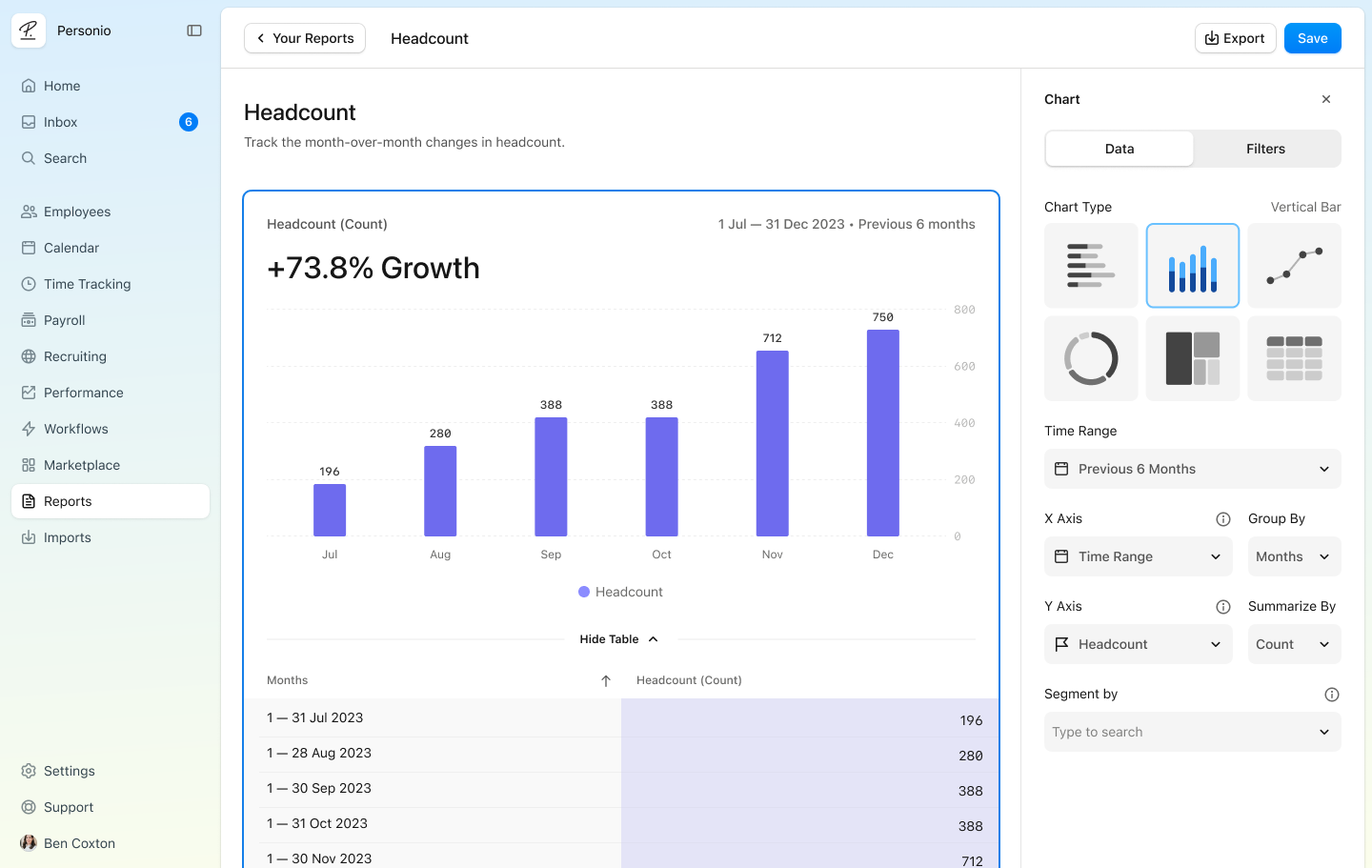
People analytics is the data-driven approach to optimising your people processes. It’s about gathering data, analysing it, and turning it into actionable steps that you can take to better recruit, manage, onboard, and develop your people.
Essentially, what we’re getting away from is the gut feeling that sometimes powered organisations of the past. Instead, relying on quantitative data (as well as qualitative insight) to holistically analyse your people and what makes them perform at their best.
Is people analytics the same as workforce analytics?
A metric by any other name would still be effective, which is why people analytics is also often referred to as workforce analytics or HR analytics. Taken together, they all mean the same thing: a different way of thinking about data, because it’s in regards to your people.
So, it’s helpful to think of each of these terms not just as the numbers surrounding your people. In fact, that would be a disservice to the art form, because your people are far more than data points. It’s about the data that can influence decisions about your people.
Is people analytics important?
People analytics is the engine that powers your people processes. It is the foundation that helps you decide what is best for your people, with all their unique characteristics taken together, to help define, track, and determine if you are benefiting from your decisions.
That is all to say that yes, people analytics is important. In fact, it may be considered essential for organisations that are scaling rapidly, looking to develop their leaders, or simply want to place added emphasis on their people and culture.
In sum, it can help with:
Talent attraction, recruitment, and retention
Uncovering skill gaps and addressing productivity questions
And much more…
Essentially, every element of the employee lifecycle has a place here. It can help bring the right people in, develop them accordingly, and even establish triggers to identify red flags when things might be taking a turn.
Introduce People Analytics Into Your Organization
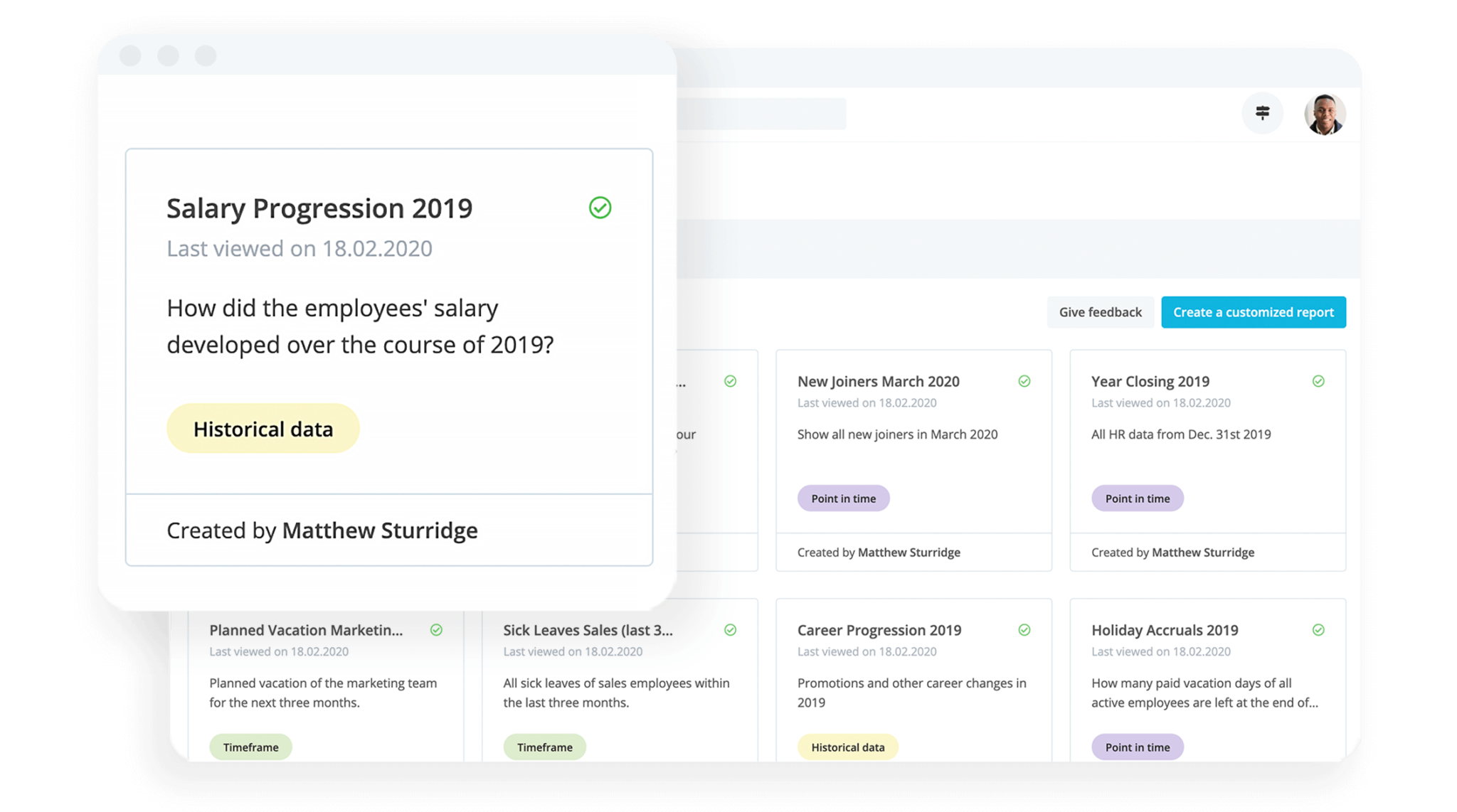
Having a proper analytics platform can ensure that your HR team is providing your business with the greatest impact and value. Personio supports by giving you access to the numbers you need.
Generate HR Reports In An Instant With Personio
Is people analytics a popular idea?
According to an article in the Evening Standard, LinkedIn has seen that nearly three-quarters (72%) of HR and talent professionals say that people analytics will be a major priority to their organisation in the next five years.
In addition, a McKinsey article says that the majority of large organisations already have people analytics teams. It’s not simply a flash in the pan or a trend on the rise, the era of analytics is truly here!
How do you gather data for people analytics?
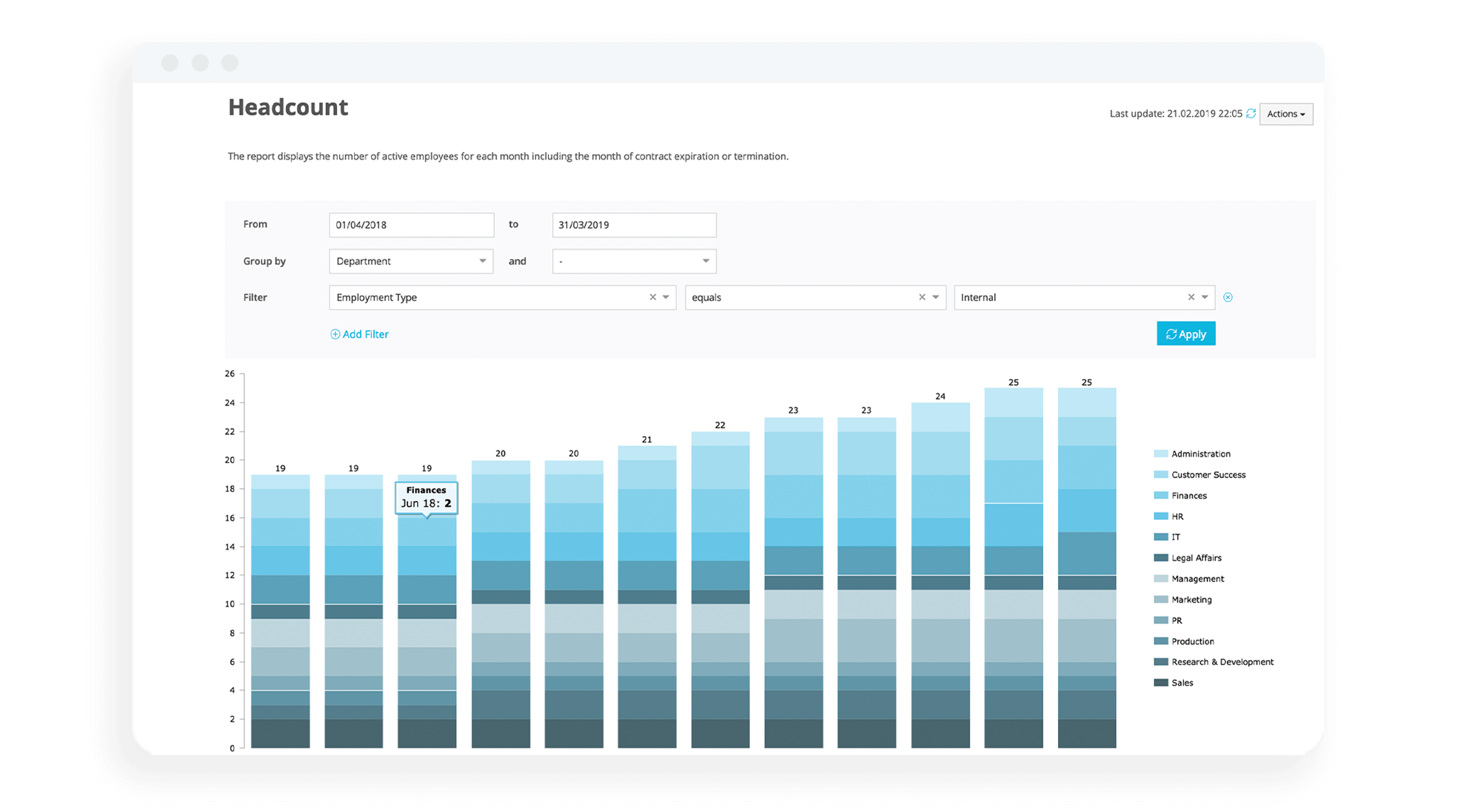
Well, you start with a reliable platform for HR analytics, as well as one that knows the importance of secure, GDPR-compliant employee data that is up to date and accurate.
This, in coordination with more qualitative measures, like pulse surveys and others, can help build the foundation for people analytics on an organisational level.
How do you interpret your people analytics?
McKinsey has a wonderful article on how to be great at people analytics. In it, they share a five-stage journey which they call the Stairway to Impact.
It shows how organisations evolve from having poor data to being able to use great analytics to make reliable predictions.
Collecting and analysing this data is an important first step but, please, don’t stop there!
How does McKinsey’s stairway to impact work?
At this stage, McKinsey suggests that it’s necessary to have in-house (or external) analysts who can help make sense of existing data or, indeed, look for more data to help drive decisions.
Then, once companies move towards advanced analytics capabilities they start using data science and statistics including sophisticated mathematical models.
At this stage, people analytics becomes the basis of a data-driven approach that is highly trusted by HR leaders – and other parts of the organisation.
The final stage McKinsey suggests (reliable predictions) is still a pipe dream for most organisations and requires ‘very big data’ and deep expertise in predictive analytics.
What are examples of people analytics in practice?
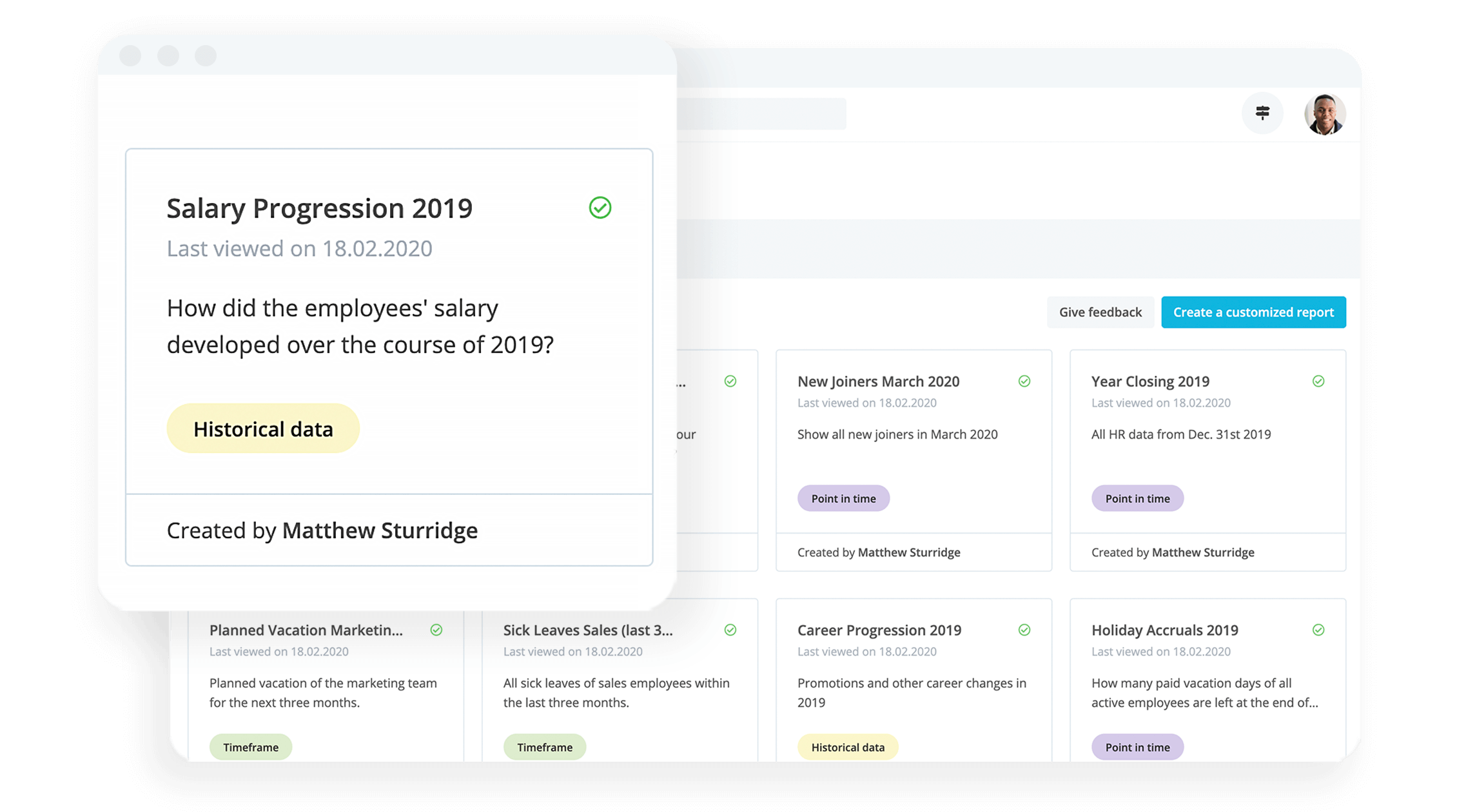
You don’t have to be able to have the statistical knowledge to make reliable predictions in order to benefit from great people analytics, though.
Sometimes it’s just great to start by gathering data that gives you a line in the sand – for example, by using employee surveys.
Get a head start by downloading our employee survey template today.As an example, Google’s HR team (known as People Operations) uses their HR analytics tools to:
Measure productivity
‘Check the pulse’ of their organisation
Turn feedback into meaningful change
According to this blog post, "They use the feedback (or data) to optimise the numerous areas of its people processes and align them with their working culture. As a result, they have many engaged employees with an average participation rate of 90%.”
Other articles, such as this one by People Management, suggest that analytics can help you recruit the right people internally, find the quiet champions in your ranks who excel at knowledge transfer, understand what’s really going on with diversity and inclusion, and much more.
For example, energy supplier SSE used their in-depth analytics to calculate that a fully trained apprentice returns £4.29 to the economy for every £1 invested – shared between the individual, the employer, and society. This helps them justify the value of apprenticeship training to senior leadership.
Consider what the Royal Bank of Scotland (RBS) has done to thoroughly investigate the quality of line management. When combining data from 360-degree reviews, engagement survey results, and staff interviews they were able to analyse 4,000 managers across the business.
Then, when they compared the results against exit interviews and staff turnover, they discovered that it’s very true: An employee does ‘join a business, but leave a manager.’
Try Our Staff Turnover Calculator Today
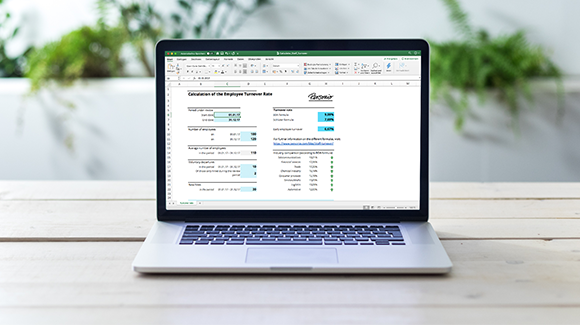
Start diving into the topic of people analytics by downloading our free Excel staff turnover calculator today. Click the button below for access right now.
Download Our CalculatorCan people analytics predict staff turnover?
Yes, people analytics can be used as a predictor for staff turnover. With it, you can establish a framework to help determine what key drivers exist for resignation. This would effectively include a series of red flags that may put someone at risk for resigning.
This could include things like absence rates, performance evaluations, engagement (number of responses to voluntary or mandatory surveys), and other metrics. Taken together, you can have a holistic view if someone is disengaged that goes beyond whether they are at work or not.
But, the most important part is then turning that data into action. People analytics can offer a signal, but your HR team then needs to put together the initiatives to make real change to help decrease the chances of people turning over.
For that, you need time. Discover how Personio can get time back for your team today.
What do HR leaders need to know about people analytics?
As an HR leader, you might be tempted to ask your reports to just tell you the numbers, year on year. But the real beauty of people analytics happens when you let skilled analysts go beyond the numbers. That’s where the gold lies!
When hiring for professionals in this field, it helps to go with experts in data. They might not necessarily be HR experts – and that’s okay – but they must always be analytical, curious, and focused on answering the question, ‘So what?’.
When HR or analytics is connected up with other systems and data sources amazing insights can be revealed. This is true across every part of your organisation.
Who is responsible for managing people analytics?
Your HR or People Team is going to be the main ones responsible for managing your repository of people analytics. After all, these are the same experts who are going to turn that data into concrete initiatives to help optimise your workforce.
For that to occur, your HR team needs the time to be able to focus on what comes out of analysis. This means saving time on their core tasks, while also being able to rely on a rock-solid analytical foundation of clean, reliable employee data.
Speaking of data, let’s talk about reports in one click with Personio.
How does people analytics relate to people strategy?
People analytics can help you root decisions firmly in reality, and can help power your overall people strategy. If your people strategy is your roadmap, people analytics is the navigation system that helps take you where you want to go.
Don’t have a people strategy? Don’t worry, download our free guide today.Great HR leaders have both the data and time to make predictions about the future of work and act on them. This combination is essential and is why having trustworthy people analytics is a core element of strategic HR. Now, you just need the time to take action.
